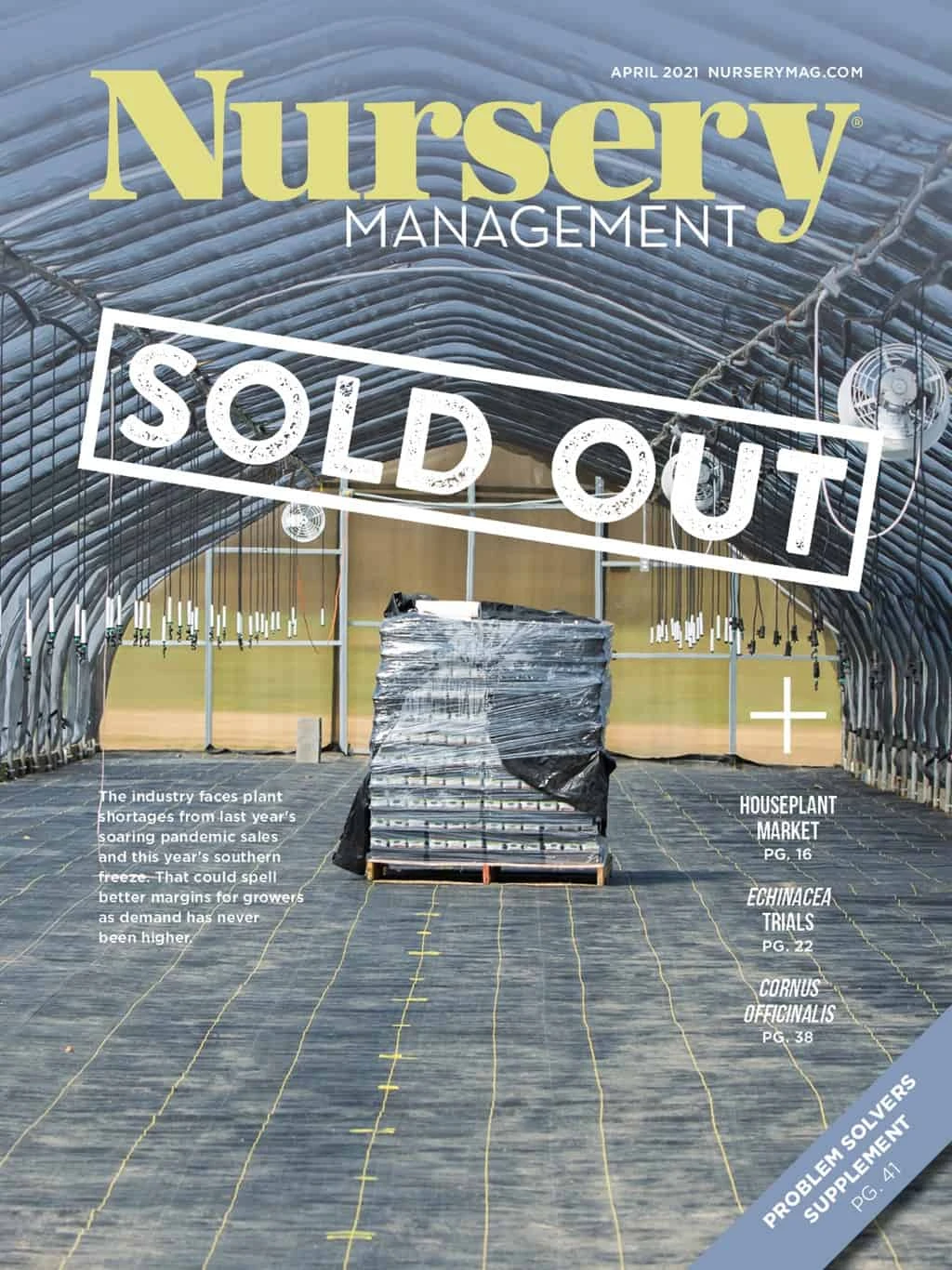
Adobe Stock

When irrigation systems become clogged, it causes production issues and negatively impacts plant growth. The good news is that it’s a manageable problem with viable solutions that growers can implement.
“We are all very aware of the importance of watering,” says Rosa E. Raudales, an assistant professor of horticulture and a greenhouse extension specialist at the University of Connecticut. “We’re also aware of the importance of not over-watering, but also [of] not stressing our plants. If you allow your system to clog, then you’re losing control because you can’t really estimate how much you’re going to water.”
The three types of clogging
According to Raudales, there are three kinds of clogging growers should be aware of: physical, biological and chemical. She says that each type has different causes and symptoms that when identified, allow growers to zero in on the problem afflicting their greenhouses.
For physical clogging, she says it involves a suspended solid backing up the system, thus preventing water from reaching the plants.

“Think about if you’re recirculating water and if you’re carrying any type of remaining debris that’s coming back from the soil,” she says. “You would expect a physical [object] that would plug your system. Mostly that would be a concern for growers who are recirculating water or maybe growers who are using pond water as their water source because it tends to be a little dirtier than other sources.”
Biological clogging occurs when biofilm builds up in an irrigation system’s pipes and slows or stops water flow, Raudales says. It is most often greenish-brown colored, giving growers a visual indicator that their pipes are clogged.
“[Biofilm] is mostly foreign debris caused by bacteria, but you can also think of it as a combination of bacteria and algae,” Raudales says. She adds that biological clogging can be the hardest type of clogging because there isn’t a comprehensive solution for it.

Be aware of chemical clogging. Raudales says that this can be caused by different materials building up in the system, most notably iron. This type of clogging is often caused when a water source such as a well is contaminated and introduces harmful materials into the system, she says. Calcium, manganese and other materials can also cause clogging.
Different treatments for different types of clogs
Raudales says treating physical clogging is straightforward, making it the easiest type of clogging for growers to deal with. Often, the material clogging the pipe is something that can be blown out the front of the system. All a grower needs to solve this issue is pressure.
For biological clogging, Raudales says it can take a “big effort” to combat it properly. For instance, if a propagation house’s emitters are clogged with biofilm, growers must choose between a few different treatment strategies. One is to take the emitters down, replace them with clean ones and wash the clogged ones. Chemical treatments are also an option, although bacteria can become resistant to them over time.

As for chemical clogging, the process is like treating physical clogging. Raudales says that it requires using a large concentration of the chemical being used to clear out the pipe and the line being shut down. It also requires an empty greenhouse or production area to avoid damaging plants.
The one significant factor that Raudales says links the different treatment options together is that unclogging irrigation systems is a labor-intensive process, and not all growers can take workers off other tasks in the growing operation and assign them to the problem. Cleaning the system is a necessity, even if it’s time consuming.
She suggests starting an ongoing, low-dose chemical treatment that can reduce buildup over time in the system. She also recommends installing a water filtration system.

Explore the April 2021 Issue
Check out more from this issue and find your next story to read.
Latest from Nursery Management
- John Ruter shares UGA's latest woody and herbaceous ornamental plant breeding projects
- Conor Foy joins EHR's national sales team
- Pantone announces its 2026 Color of the Year
- Syngenta granted federal registration for Trefinti nematicide/fungicide in ornamental market
- Get to know Kayela Aeppli
- HILA 2025 video highlights: John Gaydos of Proven Winners
- Q&A with Justin Bartlett
- Be the best choice





